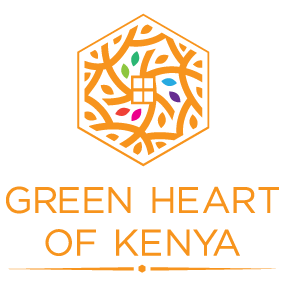
By implementing regenerative agriculture practices, we aim to restore depleted soil, revive ecosystems, and create a harmonious coexistence between humans and nature.
We are exploring our approach to rewilding and land regeneration, showcasing how simple techniques can bring the land back to life.
The Depletion of Land and the Need for Rewilding and Land Regeneration:
One of the critical issues many regions face is the erosion and loss of fertile soil due to water runoff. At Green Heart of Kenya, our experts are working diligently to address this problem through rewilding, land regeneration, and reviving the soil.
Maurice, a regenerative soil restoration steward at Green Heart of Kenya, says,
We are living in a generation where our land is depleted, and there is an urgent need for reviving the soil and building sustainable futures. Yes, it does rain, but our topsoil washes away since the soil is not able to penetrate the surface of the land, and instead, the rain washes away the top layer of fertile soil. Our approach is to rewild and regenerate soil by using simple but effective techniques inspired by Just Dig It.

Green Heart of Kenya, working with the locals, is digging crescent-shaped holes, or bunds, in the ground. On every bund, three indigenous trees are planted. These bunds are acting as barriers, preventing rainwater from sweeping away precious topsoil. By retaining water, the soil gains moisture and nutrients, creating an ideal environment for vegetation growth.
Green Heart of Kenya’s rewilding and land regenerative experts are also planting cowpeas, sorghum, amaranthus, and pigeon peas in every barn to act as cover crops in stabilizing the soils. The choice of crops planted is inspired by their adaptability to the coastal climate. They do cut the crops to be food for fungi, which aid in the breaking down of biomass. Microorganisms play a crucial role in breaking down biomass and enriching the soil. Green Heart of Kenya utilizes composting techniques to invite these beneficial microorganisms into the ecosystem. By decomposing biomass and recycling organic matter, the soil gains vital nutrients and becomes more fertile over time. We then replant the crops to ensure the continuity of the circle.
The expert team is working with the local communities on the rewilding and regenerative project. They are using this opportunity to empower them and foster ownership. Green Heart of Kenya ensures the benefits of rewilding and land regeneration extend beyond their immediate efforts. This collaborative effort creates a sense of responsibility and a long-term commitment to building sustainable futures. It’s important to remember that land regeneration and rewilding is not just about planting trees but also about restoring the natural balance of ecosystems. With more initiatives like this, We can create healthier and sustainable futures.
Masha, one of the community members says
I am happy to be part of this project. I am learning a lot and will surely implement the same back home. It’s amazing how land regeneration, a tireless and cheap activity, can yield lots of results and bring land back to life.
Green Heart of Kenya inspires rewilding and land regeneration across the region, serving as a beacon of hope for building a sustainable future.

